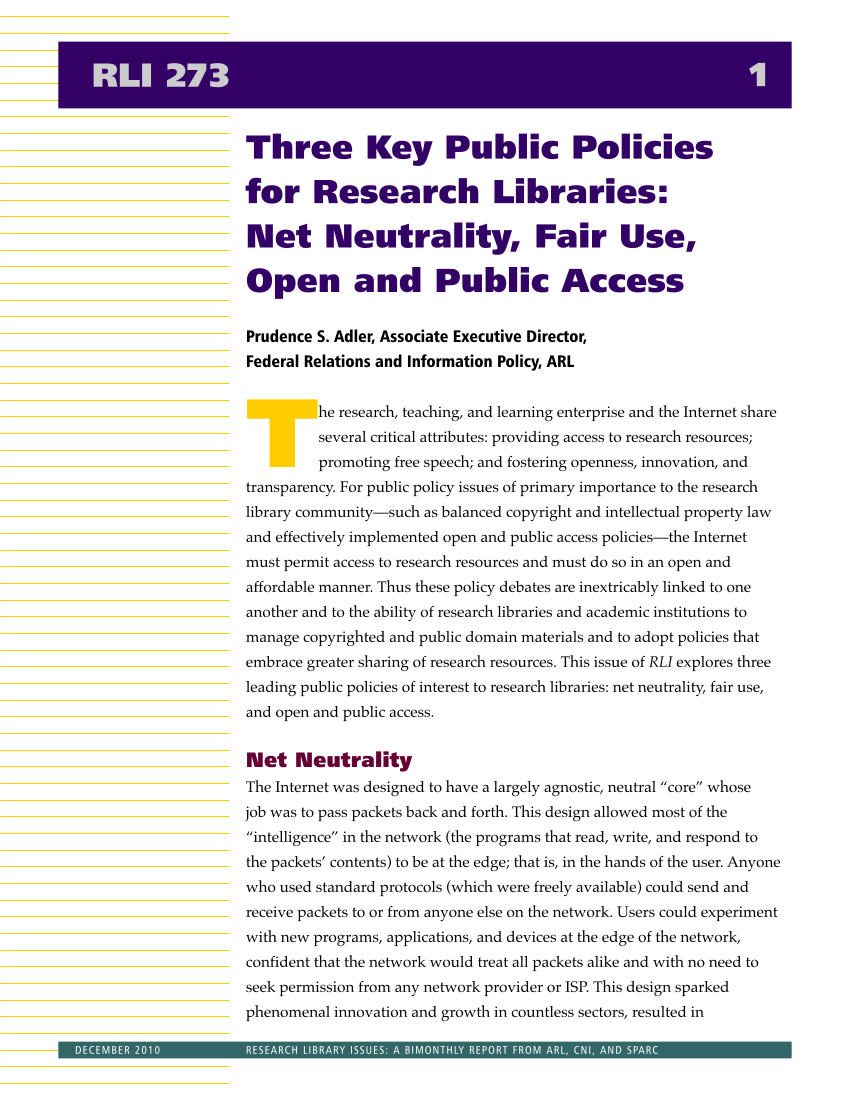Three Key Public Policies for Research Libraries: Net Neutrality, Fair Use, Open and Public Access Prudence S. Adler, Associate Executive Director, Federal Relations and Information Policy, ARL T he research, teaching, and learning enterprise and the Internet share several critical attributes: providing access to research resources promoting free speech and fostering openness, innovation, and transparency. For public policy issues of primary importance to the research library community—such as balanced copyright and intellectual property law and effectively implemented open and public access policies—the Internet must permit access to research resources and must do so in an open and affordable manner. Thus these policy debates are inextricably linked to one another and to the ability of research libraries and academic institutions to manage copyrighted and public domain materials and to adopt policies that embrace greater sharing of research resources. This issue of RLI explores three leading public policies of interest to research libraries: net neutrality, fair use, and open and public access. Net Neutrality The Internet was designed to have a largely agnostic, neutral “core” whose job was to pass packets back and forth. This design allowed most of the “intelligence” in the network (the programs that read, write, and respond to the packets’ contents) to be at the edge that is, in the hands of the user. Anyone who used standard protocols (which were freely available) could send and receive packets to or from anyone else on the network. Users could experiment with new programs, applications, and devices at the edge of the network, confident that the network would treat all packets alike and with no need to seek permission from any network provider or ISP. This design sparked phenomenal innovation and growth in countless sectors, resulted in RLI 273 1 DECEMBER 2010 RESEARCH LIBRARY ISSUES: A BIMONTHLY REPORT FROM ARL, CNI, AND SPARC







































